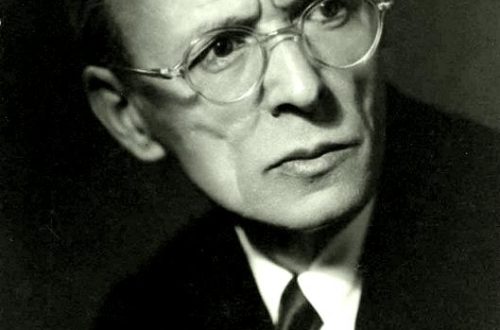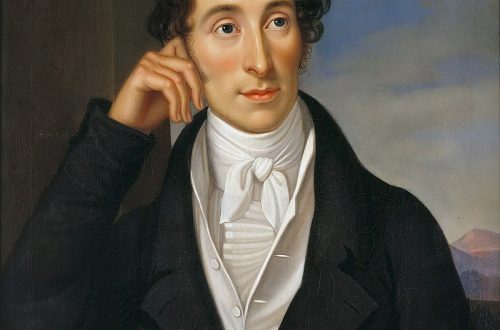
Camille Saint-Saens |
Contents
Camille Saint-Saëns
Saint-Saens belongs in his own country to a small circle of representatives of the idea of progress in music. P. Tchaikovsky
C. Saint-Saens went down in history primarily as a composer, pianist, teacher, conductor. However, the talent of this truly universally gifted personality is far from exhausted by such facets. Saint-Saens was also the author of books on philosophy, literature, painting, theater, composed poetry and plays, wrote critical essays and drew caricatures. He was elected a member of the French Astronomical Society, because his knowledge of physics, astronomy, archeology and history was not inferior to the erudition of other scientists. In his polemical articles, the composer spoke out against the limitations of creative interests, dogmatism, and advocated a comprehensive study of the artistic tastes of the general public. “The taste of the public,” the composer emphasized, “whether good or simple, it doesn’t matter, is an infinitely precious guide for the artist. Whether he is a genius or a talent, following this taste, he will be able to create good works.
Camille Saint-Saens was born into a family associated with art (his father wrote poetry, his mother was an artist). The bright musical talent of the composer manifested itself in such an early childhood, which made him the glory of the “second Mozart”. From the age of three, the future composer was already learning to play the piano, at 5 he began to compose music, and from ten he performed as a concert pianist. In 1848, Saint-Saens entered the Paris Conservatory, from which he graduated 3 years later, first in the organ class, then in the composition class. By the time he graduated from the conservatory, Saint-Saens was already a mature musician, the author of many compositions, including the First Symphony, which was highly appreciated by G. Berlioz and C. Gounod. From 1853 to 1877 Saint-Saens worked in various cathedrals in Paris. His art of organ improvisation very quickly won universal recognition in Europe.
A man of tireless energy, Saint-Saens, however, is not limited to playing the organ and composing music. He acts as a pianist and conductor, edits and publishes works by old masters, writes theoretical works, and becomes one of the founders and teachers of the National Musical Society. In the 70s. compositions appear one after another, enthusiastically met by contemporaries. Among them are the symphonic poems Omphala’s Spinning Wheel and Dance of Death, the operas The Yellow Princess, The Silver Bell and Samson and Delilah – one of the peaks of the composer’s work.
Leaving work in cathedrals, Saint-Saens devotes himself entirely to composition. At the same time, he travels a lot around the world. The renowned musician was elected a member of the Institute of France (1881), an honorary doctor of the University of Cambridge (1893), an honorary member of the St. Petersburg branch of the RMS (1909). The art of Saint-Saens has always found a warm welcome in Russia, which the composer has repeatedly visited. He was on friendly terms with A. Rubinstein and C. Cui, was keenly interested in the music of M. Glinka, P. Tchaikovsky, and the Kuchkist composers. It was Saint-Saens who brought Mussorgsky’s Boris Godunov clavier from Russia to France.
Until the end of his days, Saint-Saens lived a full-blooded creative life: he composed, not knowing fatigue, gave concerts and traveled, recorded on records. The 85-year-old musician gave his last concerts in August 1921 shortly before his death. Throughout his creative career, the composer worked especially fruitfully in the field of instrumental genres, giving first place to virtuoso concert works. Such works by Saint-Saëns as the Introduction and Rondo Capriccioso for Violin and Orchestra, the Third Violin Concerto (dedicated to the famous violinist P. Sarasata), and the Cello Concerto have become widely known. These and other works (Organ Symphony, program symphonic poems, 5 piano concertos) put Saint-Saens among the greatest French composers. He created 12 operas, of which the most popular was Samson and Delilah, written on a biblical story. It was first performed in Weimar conducted by F. Liszt (1877). The music of the opera captivates with the breadth of melodic breath, the charm of the musical characteristic of the central image – Delilah. According to N. Rimsky-Korsakov, this work is “the ideal of operatic form.”
The art of Saint-Saens is characterized by images of light lyrics, contemplation, but, in addition, noble pathos and moods of joy. The intellectual, logical beginning often prevails over the emotional in his music. The composer widely uses intonations of folklore and everyday genres in his compositions. Song and declamatory melos, mobile rhythm, grace and variety of texture, clarity of orchestral color, synthesis of classical and poetic-romantic principles of formation – all these features are reflected in the best works of Saint-Saens, who wrote one of the brightest pages in the history of world musical culture.
I. Vetlitsyna
Having lived a long life, Saint-Saens worked from an early age to the end of his days, especially fruitfully in the field of instrumental genres. The range of his interests is wide: an outstanding composer, pianist, conductor, witty critic-polemicist, he was interested in literature, astronomy, zoology, botany, traveled a lot, and was in friendly communication with many major musical figures.
Berlioz noted the first symphony of the seventeen-year-old Saint-Saens with the words: “This young man knows everything, he lacks only one thing – inexperience.” Gounod wrote that the symphony imposes an obligation on its author to “become a great master”. By the bonds of close friendship, Saint-Saens was associated with Bizet, Delibes and a number of other French composers. He was the initiator of the creation of the “National Society”.
In the 70s, Saint-Saens became close to Liszt, who greatly appreciated his talent, who helped to stage the opera Samson and Delilah in Weimar, and forever kept a grateful memory of Liszt. Saint-Saens repeatedly visited Russia, was friends with A. Rubinstein, at the suggestion of the latter he wrote his famous Second Piano Concerto, he was keenly interested in the music of Glinka, Tchaikovsky, and the Kuchkists. In particular, he introduced French musicians to Mussorgsky’s Boris Godunov clavier.
Such a life rich in impressions and personal encounters was imprinted in many of Saint-Saens’ works, and they established themselves on the concert stage for a long time.
Exceptionally gifted, Saint-Saens masterfully mastered the technique of composing writing. He possessed amazing artistic flexibility, freely adapted to different styles, creative manners, embodied a wide range of images, themes, and plots. He fought against the sectarian limitations of creative groups, against the narrowness in understanding the artistic possibilities of music, and therefore was an enemy of any system in art.
This thesis runs like a red thread through all the critical articles of Saint-Saens, which amaze with an abundance of paradoxes. The author seems to deliberately contradict himself: “Every person is free to change his beliefs,” he says. But this is just a method of polemical sharpening of thought. Saint-Saens is disgusted by dogmatism in any of its manifestations, whether it is admiration for the classics or praise! fashionable art trends. He stands up for the breadth of aesthetic views.
But behind the polemic lies a sense of serious unease. “Our new European civilization,” he wrote in 1913, “is moving forward in an anti-artistic direction.” Saint-Saëns urged composers to better know the artistic needs of their audiences. “The taste of the public, good or bad, it doesn’t matter, is a precious guide for the artist. Whether he be a genius or a talent, following this taste, he will be able to create good works. Saint-Saens warned young people against false infatuation: “If you want to be anything, stay French! Be yourself, belong to your time and your country…”.
Questions of national certainty and the democratism of music were sharply and timely raised by Saint-Saens. But the resolution of these issues both in theory and in practice, in creativity, is marked by a significant contradiction in him: an advocate of unbiased artistic tastes, beauty and harmony of style as a guarantee of the accessibility of music, Saint-Saens, striving for formal perfection, sometimes neglected pithiness. He himself told about this in his memoirs about Bizet, where he wrote not without bitterness: “We pursued different goals – he was looking first of all for passion and life, and I was chasing the chimera of purity of style and perfection of form.”
The pursuit of such a “chimera” impoverished the essence of Saint-Saens’ creative quest, and often in his works he glided over the surface of life phenomena rather than revealed the depth of their contradictions. Nevertheless, a healthy attitude to life, inherent in him, despite skepticism, a humanistic worldview, with excellent technical skill, a wonderful sense of style and form, helped Saint-Saens create a number of significant works.
M. Druskin
Compositions:
Opera (total 11) With the exception of Samson and Delilah, only premiere dates are given in parentheses. The Yellow Princess, libretto by Galle (1872) The Silver Bell, libretto by Barbier and Carré (1877) Samson and Delilah, libretto by Lemaire (1866-1877) “Étienne Marcel”, libretto by Galle (1879) “Henry VIII”, libretto by Detroit and Sylvester (1883) Proserpina, libretto by Galle (1887) Ascanio, libretto by Galle (1890) Phryne, libretto by Augue de Lassus (1893) “Barbarian”, libretto by Sardu i Gezi (1901) “Elena” (1904) “Ancestor” (1906)
Other musical and theatrical compositions Javotte, ballet (1896) Music for numerous theatrical productions (including Sophocles’ tragedy Antigone, 1893)
Symphonic works Dates of composition are given in parentheses, which often do not coincide with the dates of publication of the named works (for example, the Second Violin Concerto was published in 1879 – twenty-one years after it was written). The same is true in the chamber-instrumental section. First Symphony Es-dur op. 2 (1852) Second Symphony a-moll op. 55 (1859) Third Symphony (“Symphony with Organ”) c-moll op. 78 (1886) “Omphal’s spinning wheel”, symphonic poem op. 31 (1871) “Phaeton”, symphonic poem or. 39 (1873) “Dance of Death”, symphonic poem op. 40 (1874) “Youth of Hercules”, symphonic poem op. 50 (1877) “Carnival of the Animals”, Great Zoological Fantasy (1886)
Concerts First Piano Concerto in D-dur op. 17 (1862) Second Piano Concerto in g-moll op. 22 (1868) Third Piano Concerto Es-dur op. 29 (1869) Fourth Piano Concerto c-moll op. 44 (1875) “Africa”, fantasy for piano and orchestra, op. 89 (1891) Fifth Piano Concerto in F-dur op. 103 (1896) First Violin Concerto A-dur op. 20 (1859) Introduction and rondo-capriccioso for violin and orchestra op. 28 (1863) Second Violin Concerto C-dur op. 58 (1858) Third violin concerto in h-moll op. 61 (1880) Concert piece for violin and orchestra, op. 62 (1880) Cello Concerto a-moll op. 33 (1872) Allegro appassionato for cello and orchestra, op. 43 (1875)
Chamber instrumental works Piano quintet a-moll op. 14 (1855) First piano trio in F-dur op. 18 (1863) Cello Sonata c-moll op. 32 (1872) Piano quartet B-dur op. 41 (1875) Septet for trumpet, piano, 2 violins, viola, cello and double bass op. 65 (1881) First violin sonata in d-moll, op. 75 (1885) Capriccio on Danish and Russian Themes for flute, oboe, clarinet and piano op. 79 (1887) Second piano trio in e-moll op. 92 (1892) Second Violin Sonata Es-dur op. 102 (1896)
Vocal works About 100 romances, vocal duets, a number of choirs, many works of sacred music (among them: Mass, Christmas Oratorio, Requiem, 20 motets and others), oratorios and cantatas (“The Wedding of Prometheus”, “The Flood”, “Lyre and Harp” and other).
Literary writings Collection of articles: “Harmony and Melody” (1885), “Portraits and Memoirs” (1900), “Tricks” (1913) and others





